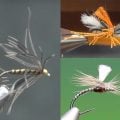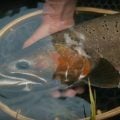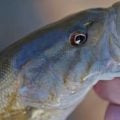Tippets: Deep Sea Bioluminescence, Fighting Atlantic Salmon Farms, Herring Return to Hudson River Tributary, Farmed Salmon Hearing Loss
- Bioluminescence, the ability to produce light, is more common in fish species than once thought. A new study published in PLOS ONE examines the “Repeated and Widespread Evolution of Bioluminescence in Marine Fishes”
- Open-water Atlantic salmon farms pose an unacceptable risk to ESA-listed wild salmon and steelhead. “They pollute the nearby ecosystem, and the crowded pens create an environment in which diseases, pathogens, and parasites can multiply rapidly and spread to wild fish.” Read more on the Wild Fish Conservancy’s fight to prevent net pen expansions in Puget Sound.
- For the first time in 85 years, herring are spawning in a tributary to the Hudson River after a dam was removed from the tributary’s mouth. “Environmental improvement efforts like the removal of the Wynants Kill dam are critically important to maintaining a healthy Hudson River ecosystem,” says Troy Mayor Patrick Madden. Via The Two Way.
- New research suggests farmed salmon may suffer from acute hearing loss. “The team discovered that hatchery-raised fish were ten times more likely to have otolith deformities than wild ones,” writes Jason G. Goldman on Conservation Magazine.
online pharmacy buy clomid online no prescription pharmacy
←Previous Story
Mora National Fish Hatchery’s 2016 Gila Trout Spawning Season Ends on High Note
Next Story→
Protect the Beaverhead River











